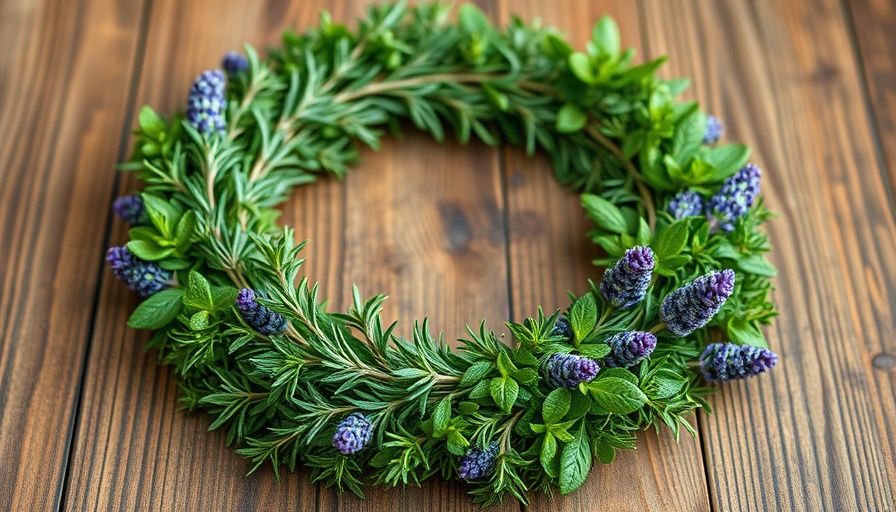
Transform Your Culinary Experience With an Herb Wreath
Imagine stepping into your kitchen, greeted by the aromatic scents of your favorite herbs hanging in a wreath. Not only do these culinary herb wreaths provide a functional way to keep your favorite herbs at hand, but they add a touch of beauty and organic charm to your space.
The Joy of Herb Gardening
Herb gardening has become a rewarding hobby for many, with enthusiasts enjoying the benefits of fresh herbs year-round. With over 25 types of herbs in my garden, the sheer delight of harvesting these fragrant plants is unmatched. With harvest season in full swing, it’s time to explore the creative ways to use your bountiful harvest—such as creating a stunning herb wreath that can elevate your cooking and your kitchen decor.
Choosing the Right Herbs for Your Wreath
When selecting herbs for your wreath, it's best to go for those with woody stems that retain their shape as they dry. Think about using aromatics like rosemary, sage, and thyme as your base. The visual appeal can be enhanced by adding herbal flowers such as lavender or fennel blossoms. However, it's important to experiment and see which herbs hold their shape the best. Adding culinary favorites like bay and oregano not only improves your wreath's usability but also contributes to its fragrance.
Guide to Making Your Own Culinary Herb Wreath
Here’s a simple guide to creating your own herb wreath. Start by gathering a wreath frame, floral wire, rubber bands, twist ties, and your chosen assortment of herb stems, leaves, and flowers. Begin with a sturdy base—rosewood or rosemary works excellently—using floral wire to secure your herbs in place. You can either create small bunches with rubber bands or poke individual sprigs directly into the wreath frame, securing them with wire as you go. Patience is essential, but the final product will be a breathtaking, functional work of art.
How Long Will Your Herb Wreath Last?
Many fresh herb wreaths last for a couple of months, but those made from hardier herbs tend to dry nicely and can last even longer. To maximize the longevity of your wreath, choose herbs known for their ability to dry well, such as thyme and lavender. Storing it in a shady, dry place helps it preserve its beauty and functionality.
Beyond the Wreath: Creative Uses for Herbs
Once you master the art of crafting a wreath, don't stop there! Fresh and dried herbs can be used in numerous kitchen delights. From invigorating your cooking with fresh herb-infused oils to making homemade herbal vinegar, your culinary possibilities expand significantly. Remember, the next time you're crafting a dish, a simple snip from the wreath can elevate the flavor profile, making your meals not just delicious but memorable.
The Community Benefits of Herb Gardening
The rise in herb gardening reflects a broader trend towards sustainable living and organic gardening. With concerns over food sources and pesticides ever-growing, backyard gardens offer a perfect solution. By growing your own herbs, you significantly reduce your carbon footprint while enjoying fresh, chemical-free ingredients right from your home. Moreover, herb gardens can foster community spirit, transforming backyards and balconies into vibrant, green spaces that invite sharing and collaboration among neighbors.
Embrace the Joy of Gardening
Culinary herb wreaths exemplify how gardening can improve not just what is on your plate but also the ambiance of your home. Taking the time to grow, harvest, and create might just become one of your most cherished routines. Plus, who wouldn’t love a kitchen adorned with aromatic, beautiful herbs?
Join the Movement
Why not join the growing community of herb gardeners? Whether you have vast outdoor space or just a sunny windowsill, cultivating herbs adds beauty, flavor, and bonding to your food preparation routines. Gather your friends or family, share ideas about gardening projects, and feel the rewarding connection that comes with nurturing plants.
 Add Row
Add Row  Add
Add 




Write A Comment